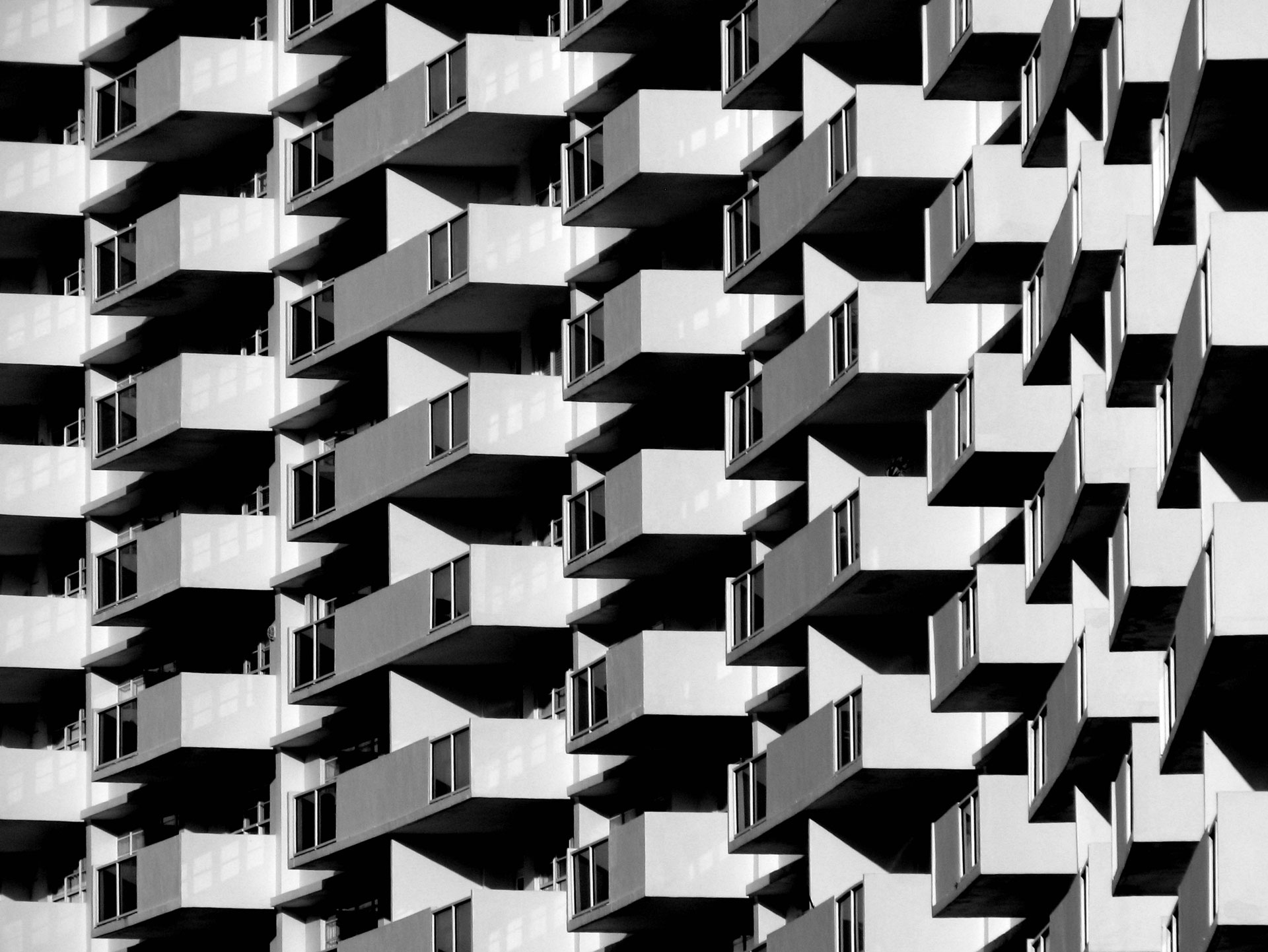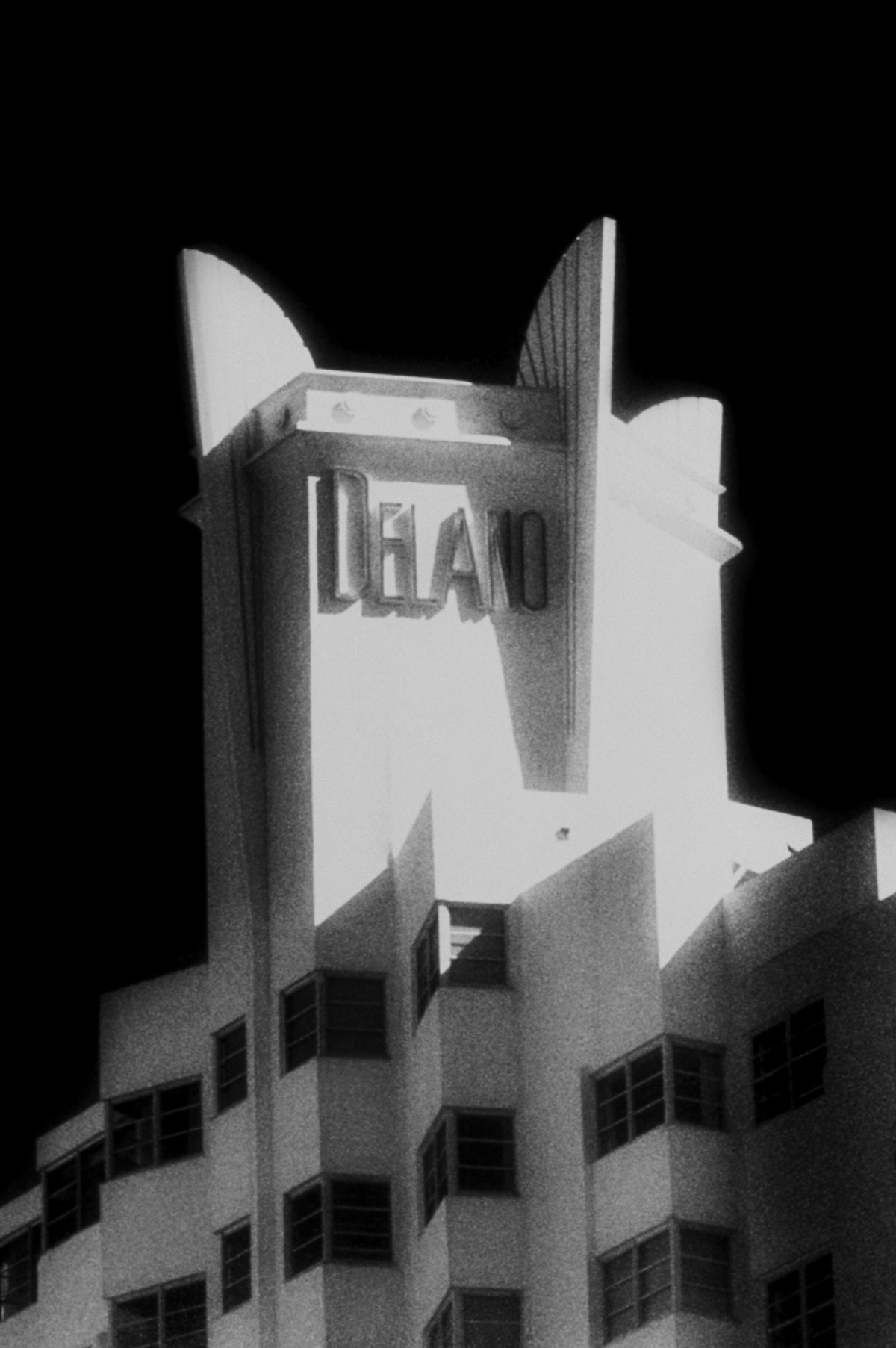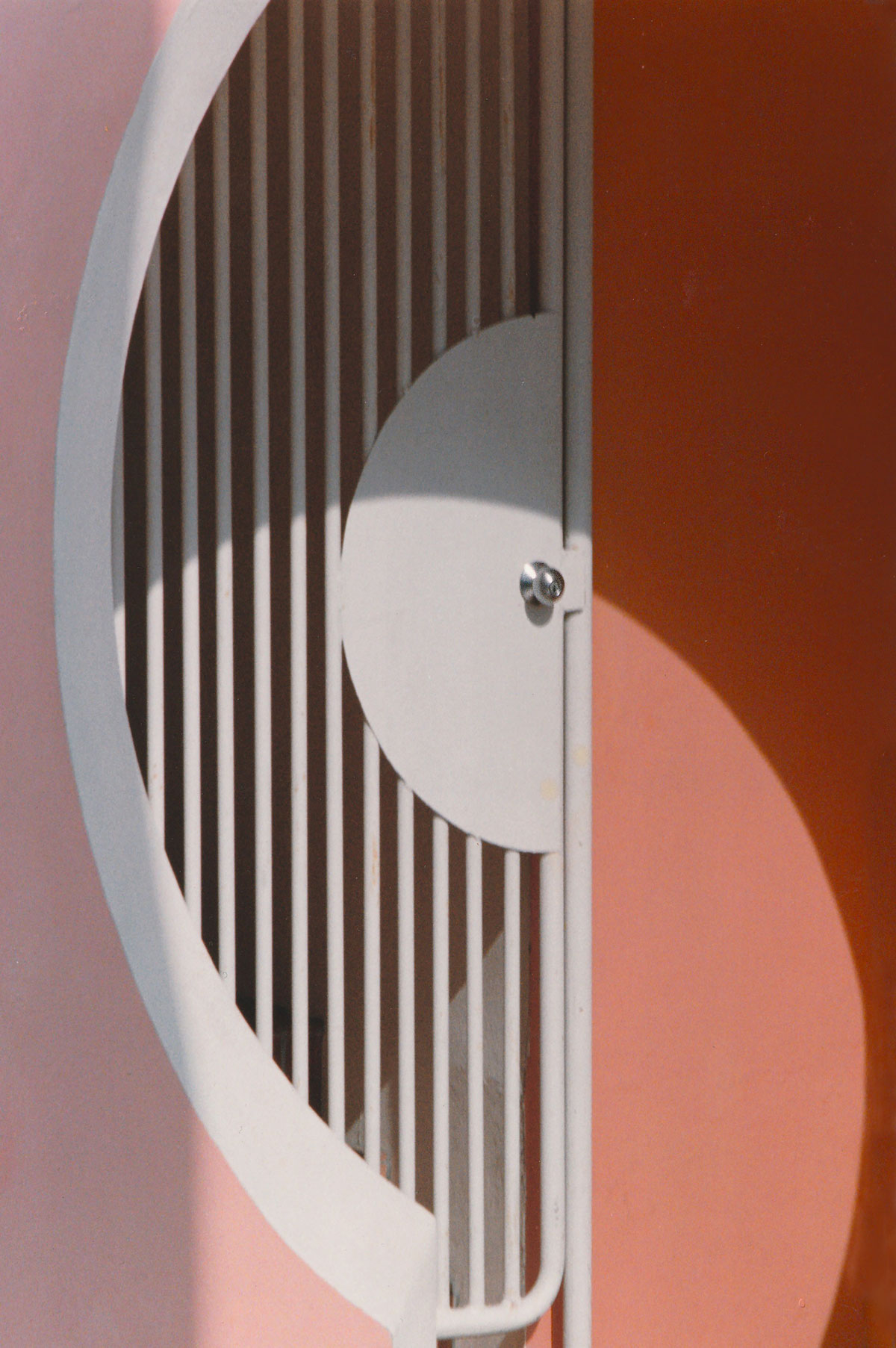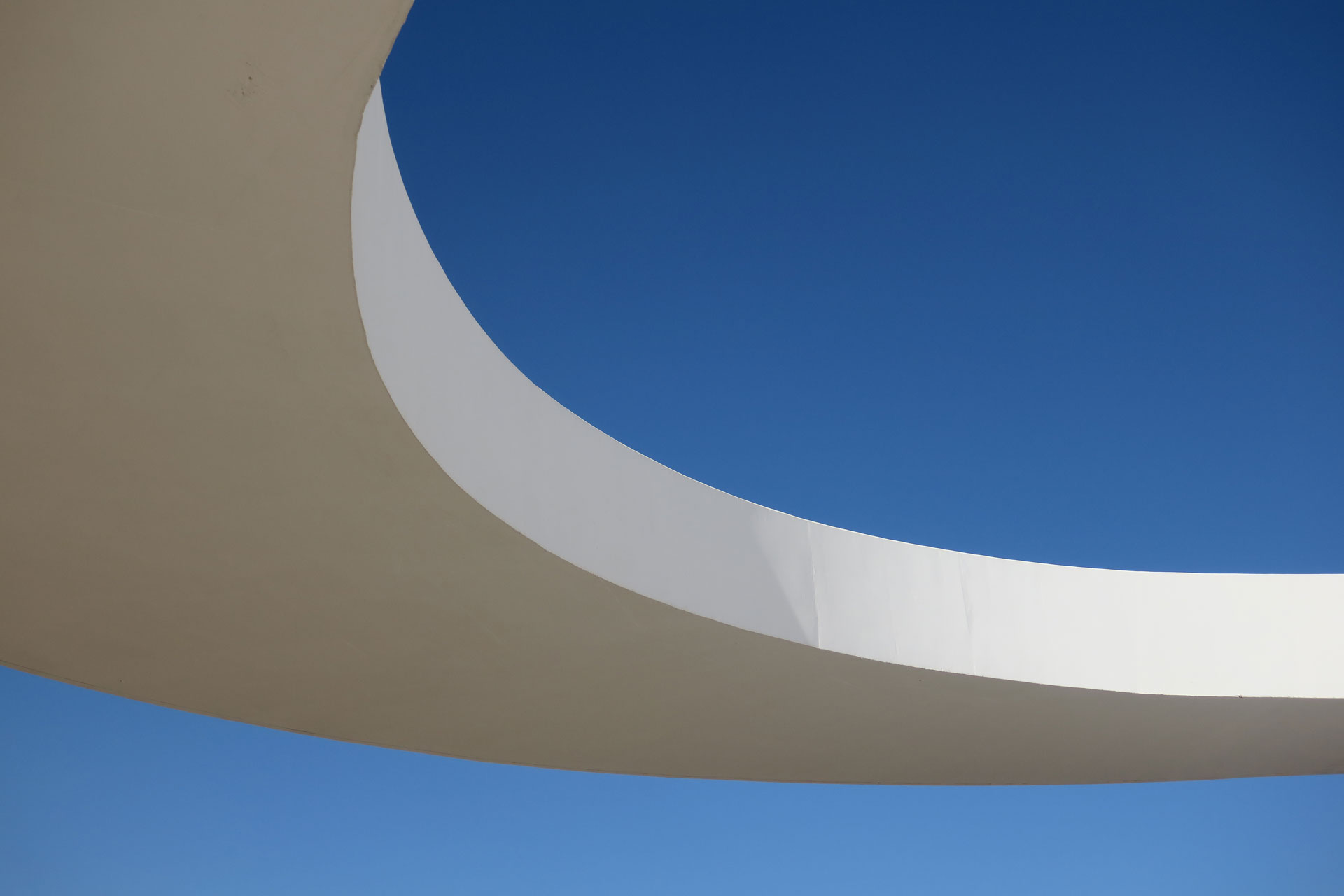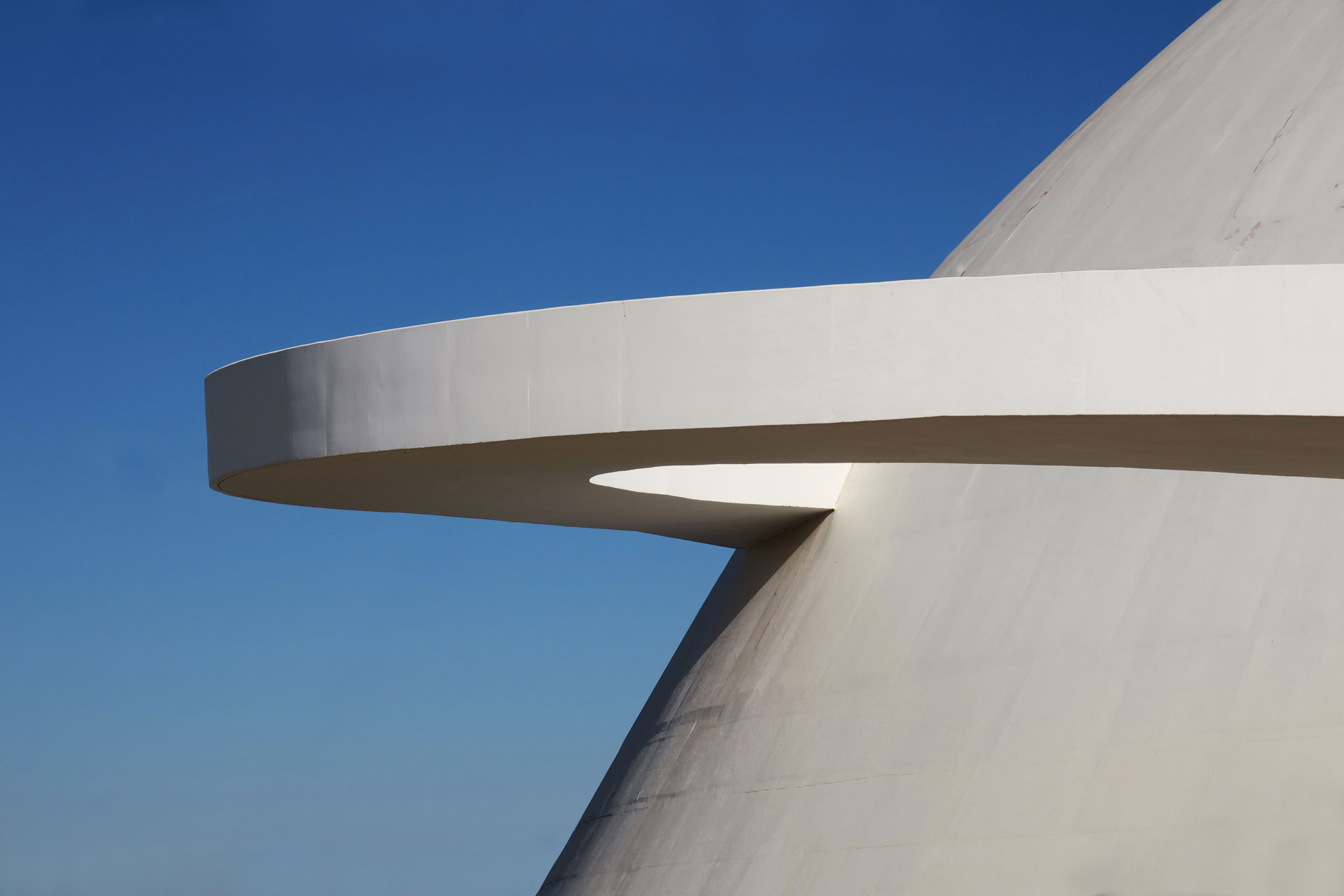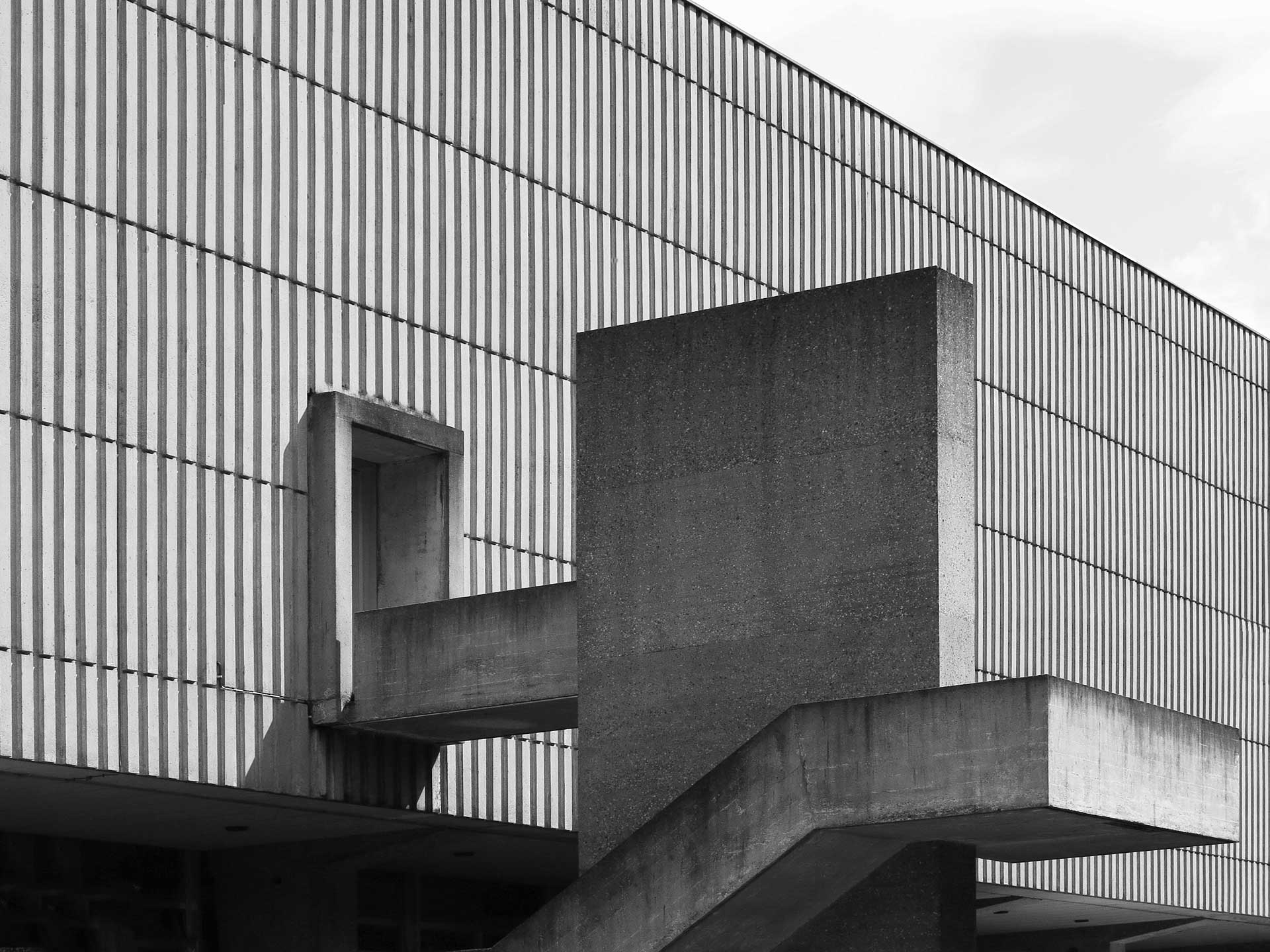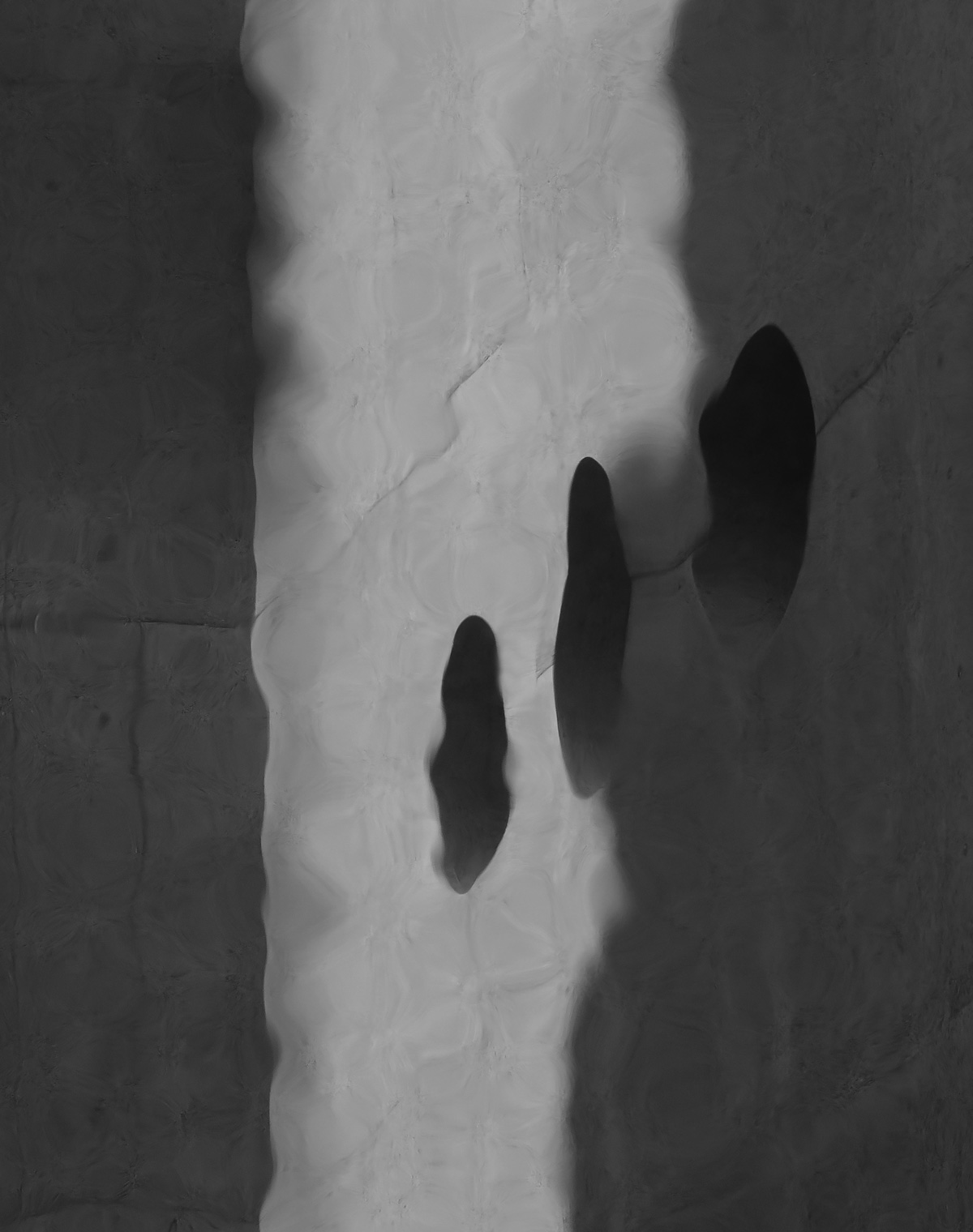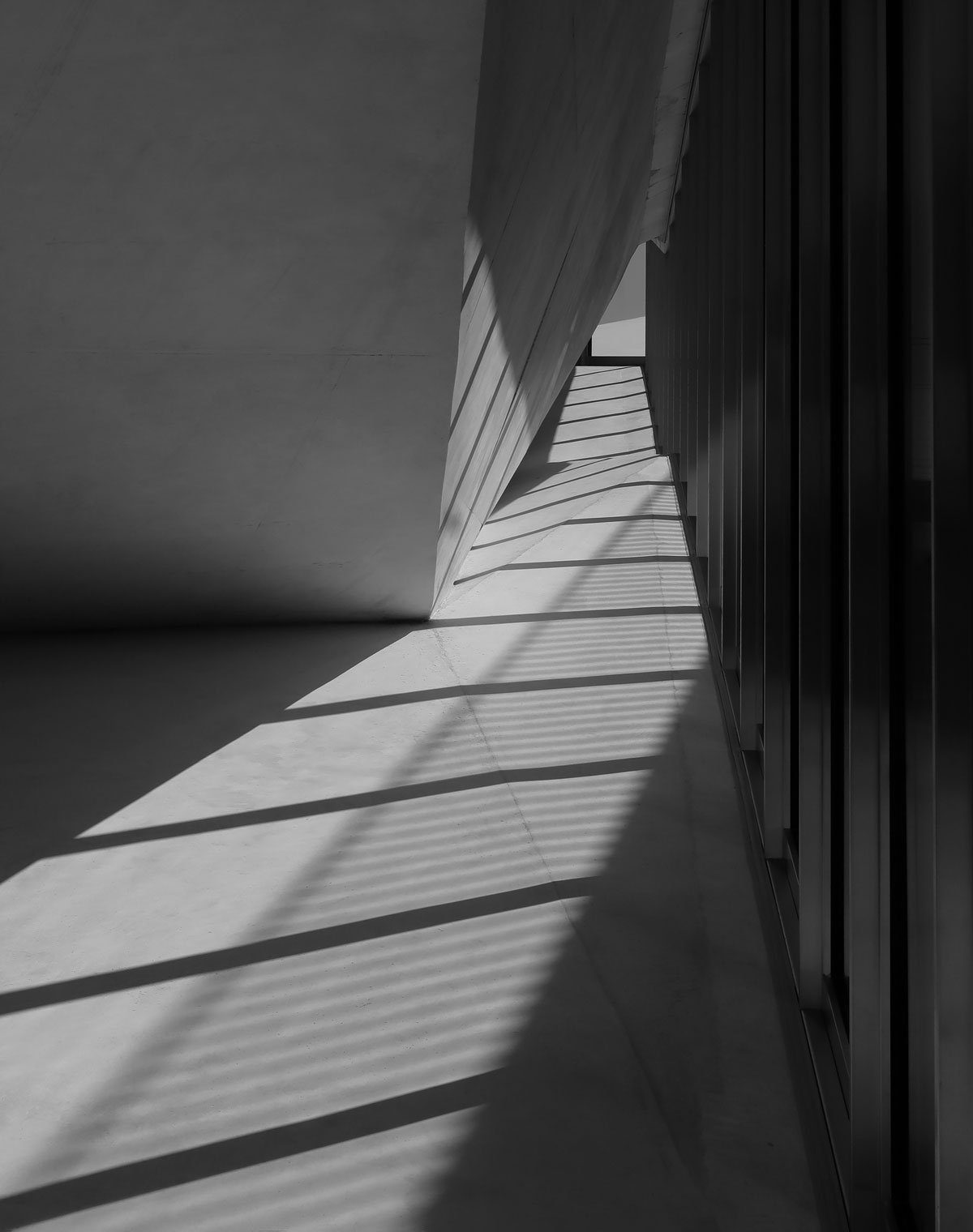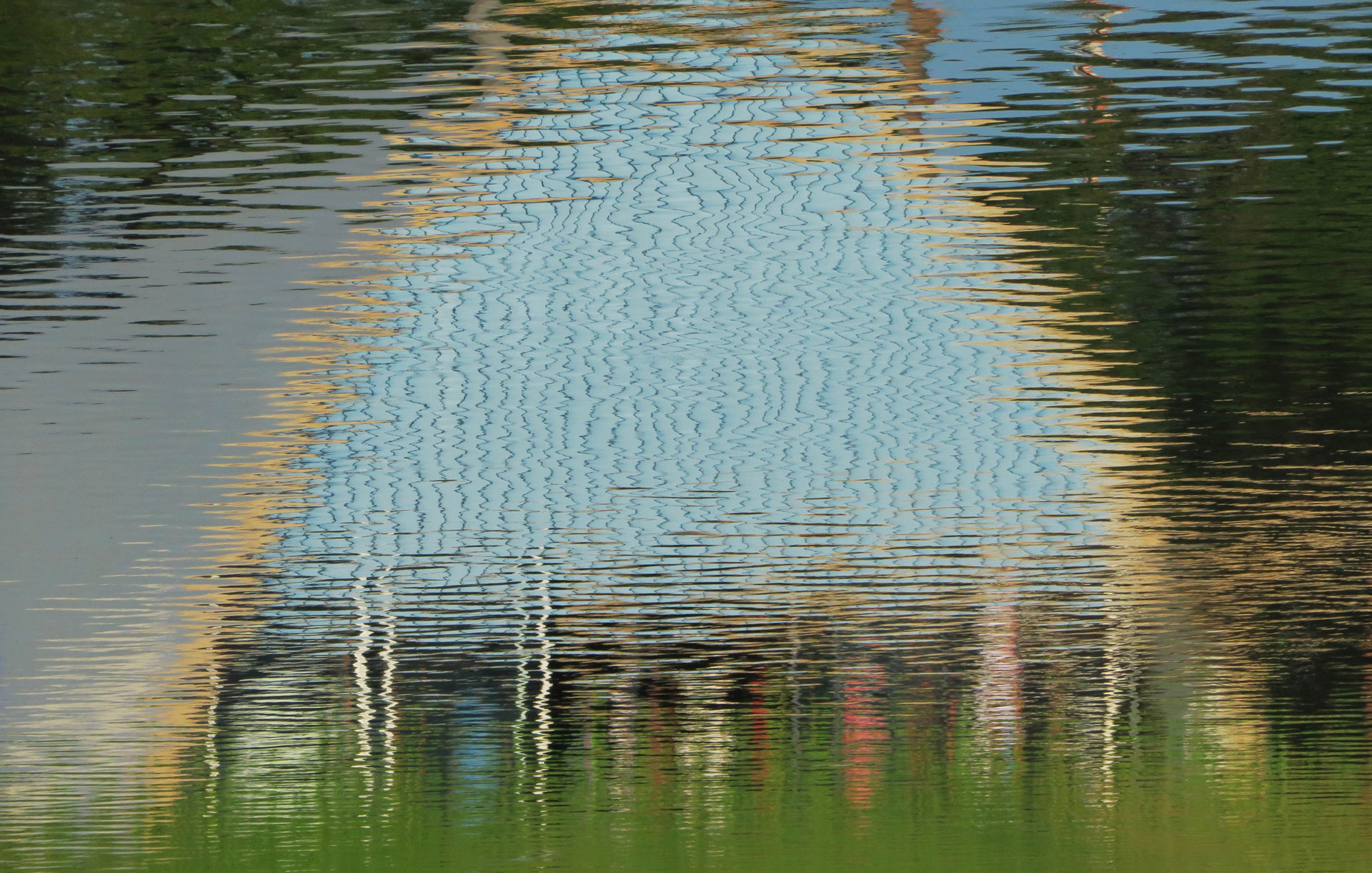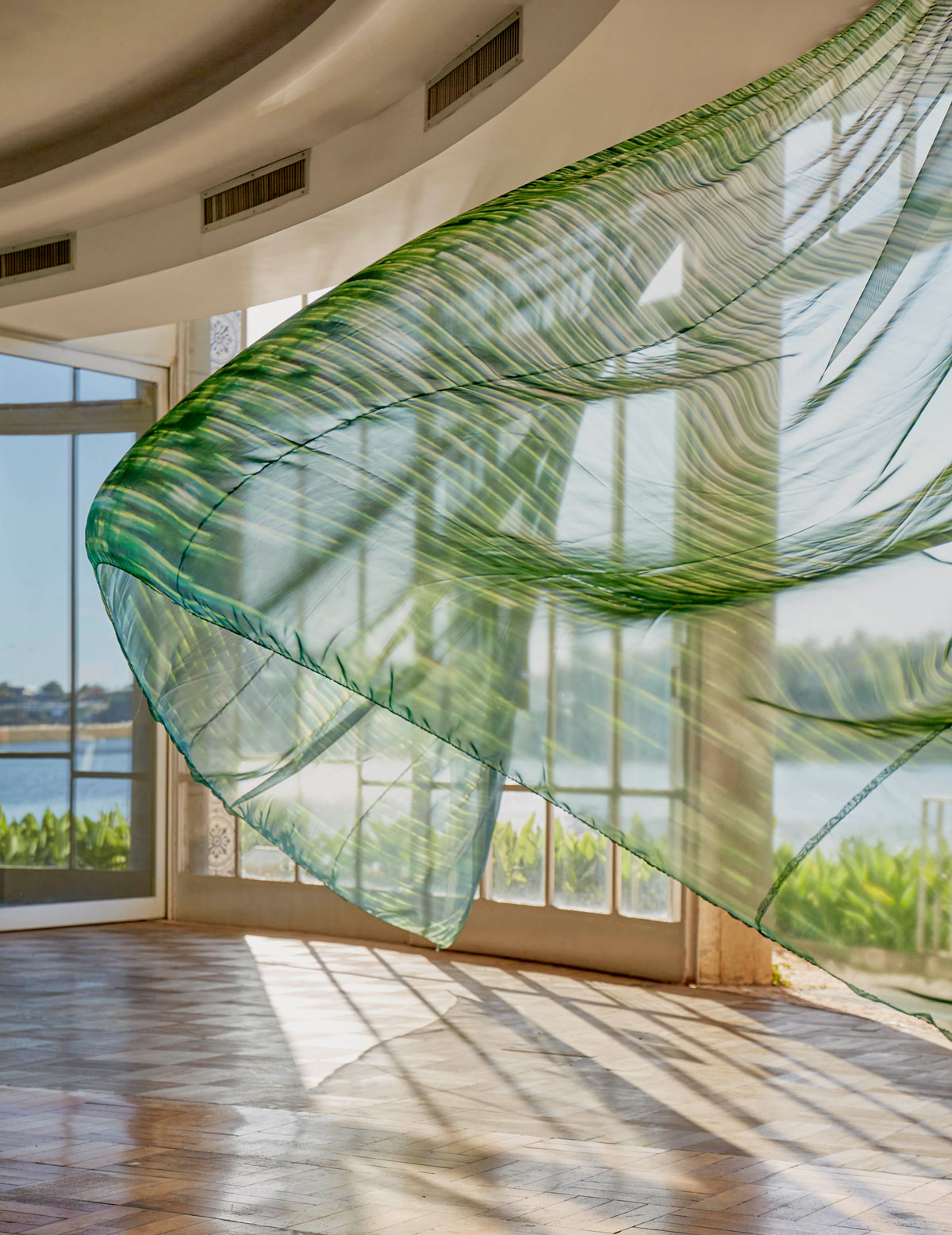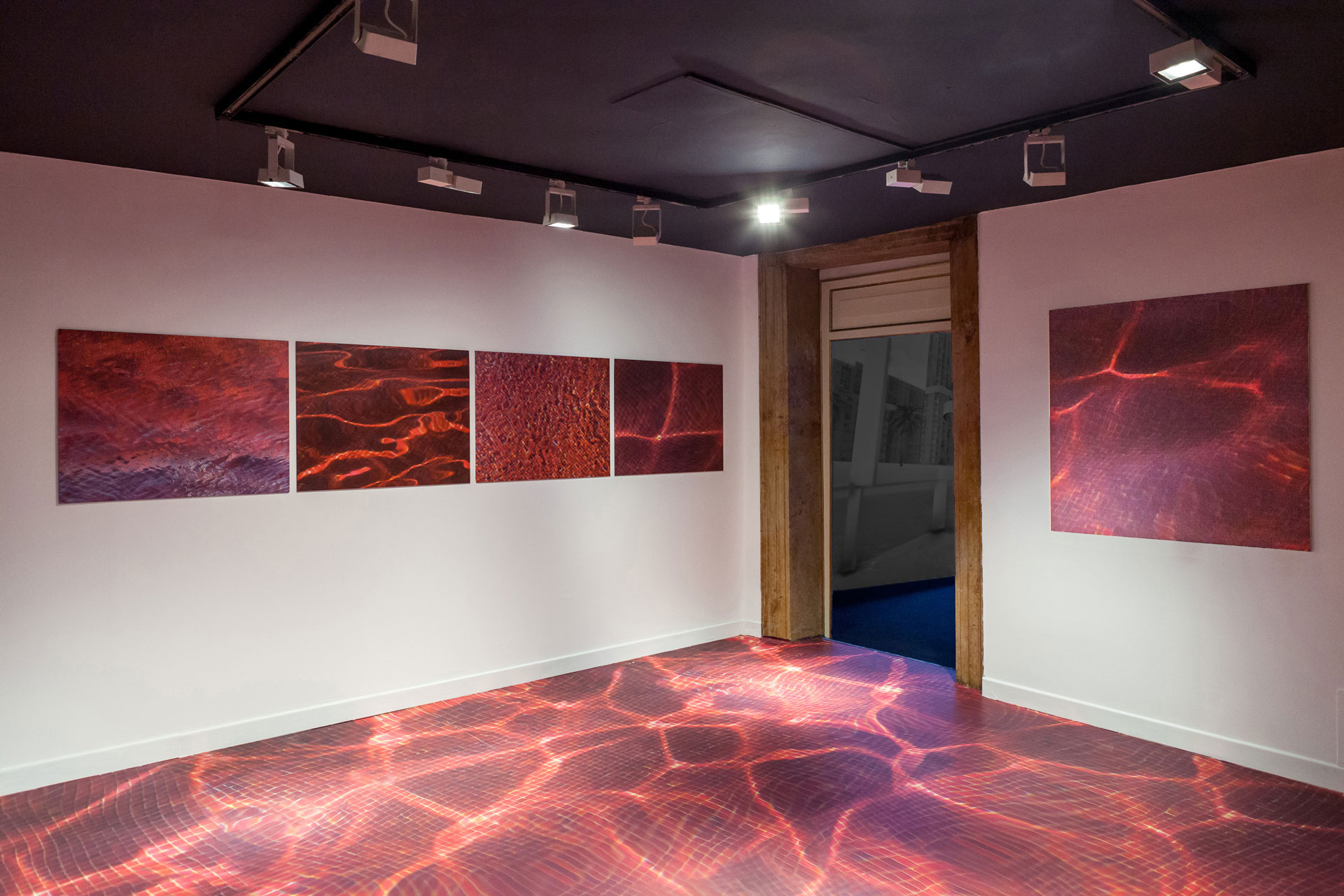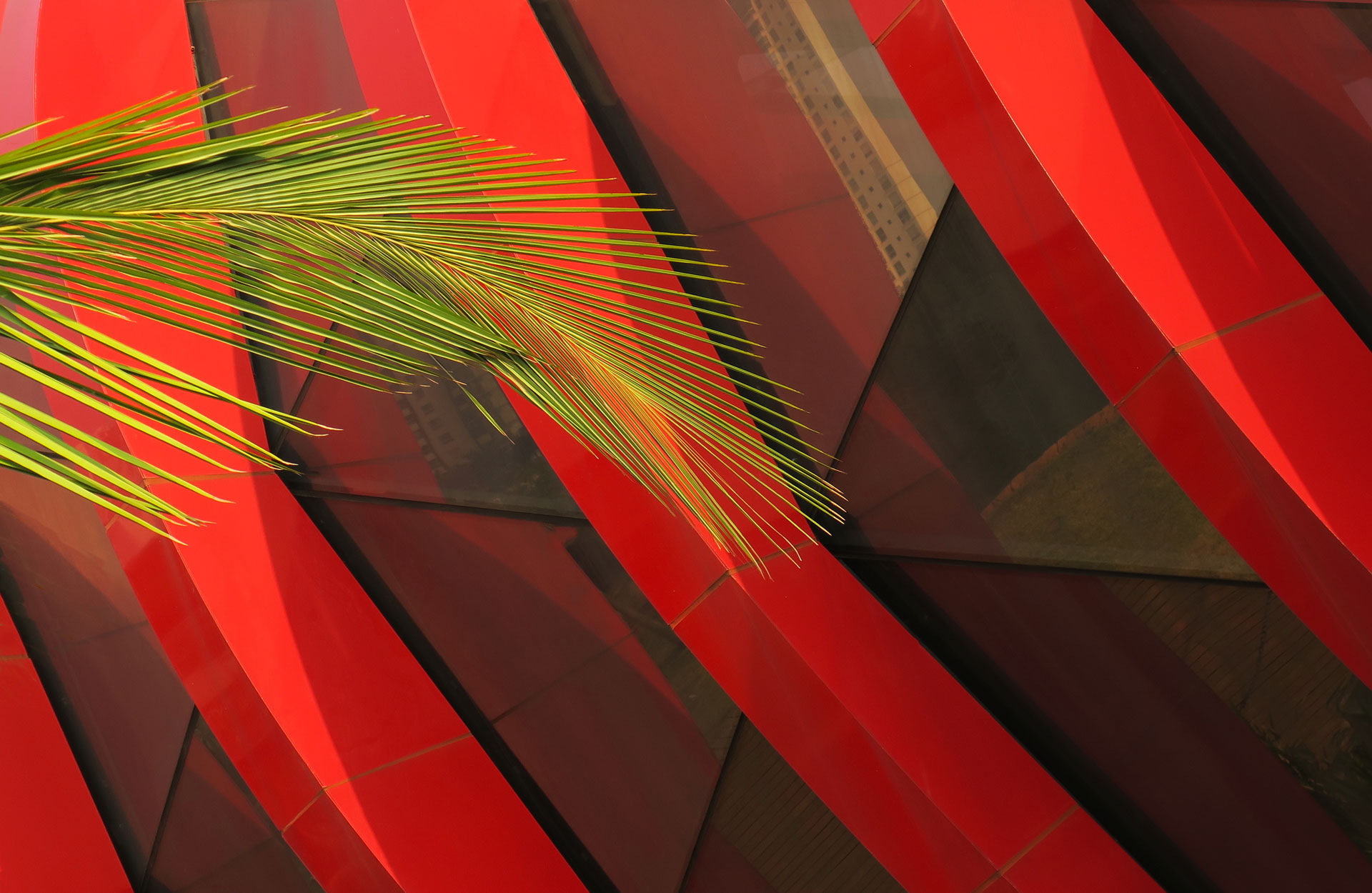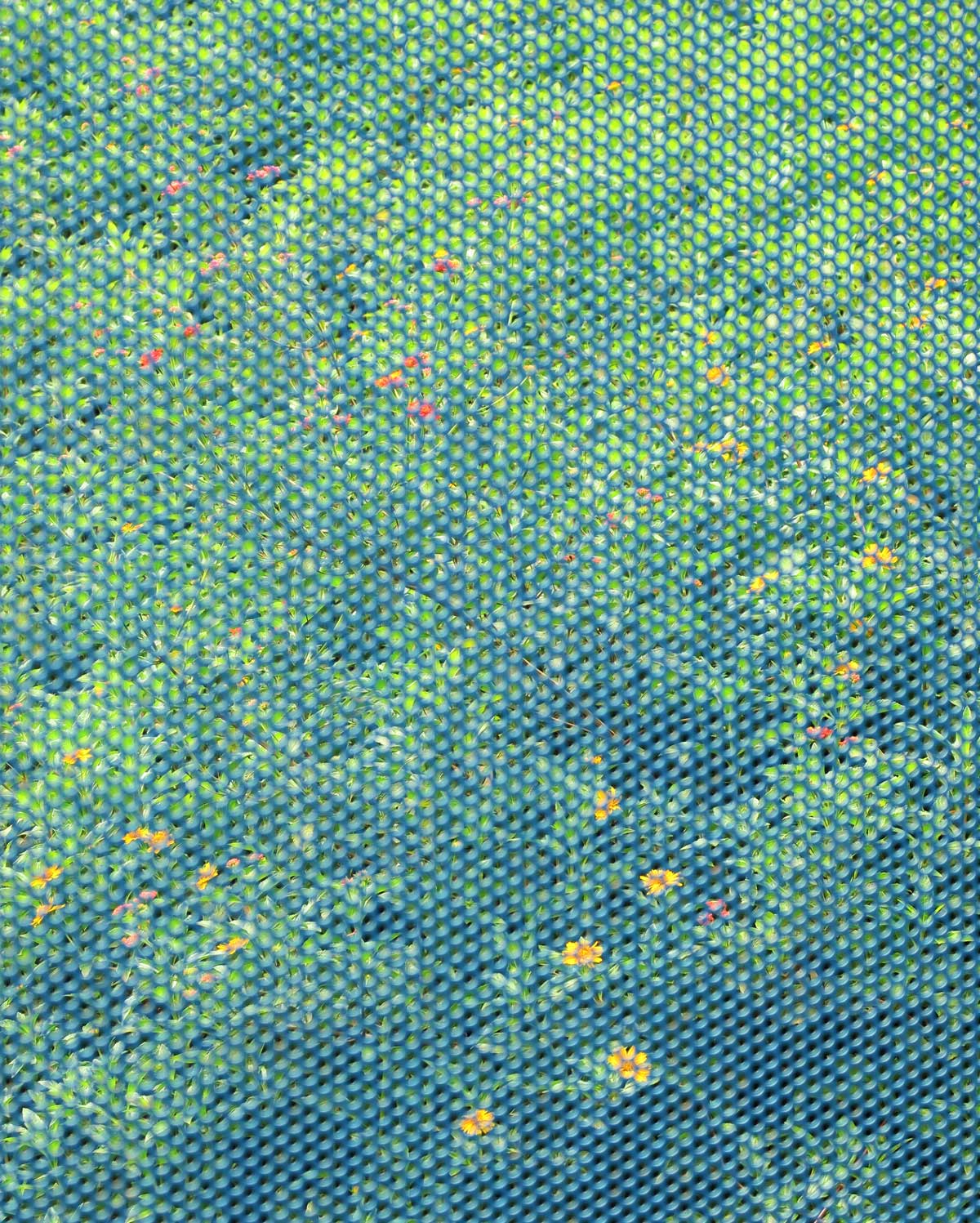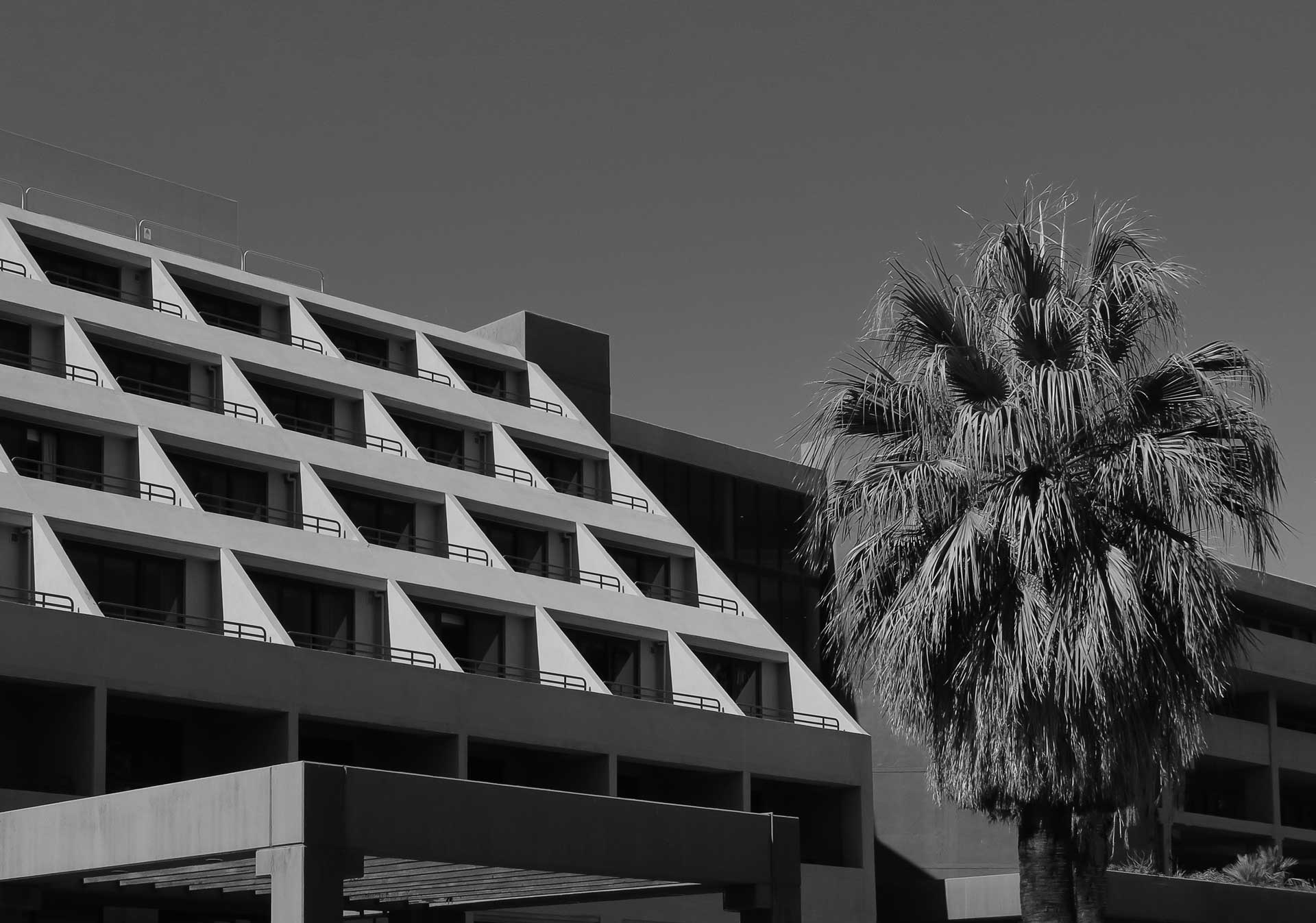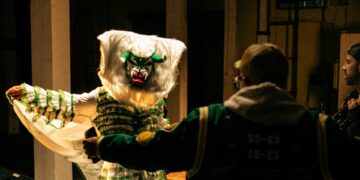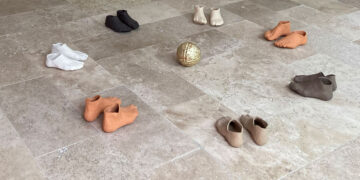Born in New Jersey, USA, Clemence grew up in Niterói, just across the bay from Rio de Janeiro. After earning a degree in architecture from the Federal University of Rio de Janeiro, he returned to the United States and settled in Miami Beach, Florida, where he began working as a photographer. There, he pursued a deep connection to beauty through space and time—whether in a fleeting moment or a quiet detail. His photography is far from a mere documentary record; rather than simply capturing a piece of the world or testifying to an event, his images reveal meaning and relationships. With unexpected angles, striking contrasts, and bold compositions, Clemence transforms ordinary details into monumental presences. His lens resists stereotypes and predictability, offering new perspectives through abstraction and the evocative power of light.
Paul Clemence, MiMo Balconies, Photography, various sizes. Miami Beach, FL. Courtesy of the artist.
During his years in Miami Beach, Clemence received two consecutive awards from national competitions organized by the Miami Chapter of the American Institute of Architects and published his first book, South Beach Architectural Photographs. The volume offers a striking visual journey through the city’s iconic hotels, residential buildings, and urban landscapes—home to some of the world’s most renowned Art Deco architecture. Captured in dramatic black and white (some with infrared film), the photographs celebrate sunlight’s interplay with geometric forms and underscore architecture’s emotional impact.
This period was key in refining Clemence’s artistic eye. He began using architecture almost as a pretext to explore his true fascination: the ways light inhabits and transforms urban space. That sensibility is evident in his next book, Mies van der Rohe’s Farnsworth House, an exquisite photographic essay on one of the modern German architect’s most celebrated residential designs. A must-have for lovers of architecture, design, modernism, the Bauhaus, Mies van der Rohe, and photography, the book reveals the harmony between light, glass, and structure with poetic intensity. Several of these images are now part of the Mies van der Rohe Archives housed by the Museum of Modern Art ( MoMA) in New York City.
Left image: Paul Clemence, Delano, 2020. Photography infrared film, various sizes. Miami Beach, FL. Right image: Paul Clemence, South Beach Composition, 1991. Photography, various sizes. Miami Beach, FL. Courtesy of the artist.
This marks the beginning of a trajectory that firmly establishes Paul Clemence’s photographic work within the contemporary visual arts landscape. His images have been featured in numerous prestigious publications, including Gagosian Quarterly, Metropolis, ArchDaily, Architizer, Casa Vogue Brasil, Modern Magazine, Wallpaper Magazine, Dwell, Interior Design, Archinect, Designboom, The Design Edit, Elle Decor Italia, Architects & Artisans, Everett Potter’s Travel Report, GoNomad, BBC Travel, and Aishti, among others. His work has also been published in notable books, including Here/After: Structures in Time, a collaboration with writer and essayist Robert Landon exploring the connection between Architecture and the passing of time.
In 2020, during the height of global lockdowns implemented to curb the spread of the pandemic, Paul Clemence paid tribute to Brazil’s capital, Brasília, by sharing an online photographic essay of the city’s most iconic buildings. Designed by Oscar Niemeyer (Brazil, 1907–2012)—a central figure in the development of modern architecture—these structures embody a visionary legacy. That same year, a diptych from the series was exhibited at the Consulate General of Brazil in New York. In 2022, Clemence revisited the work of Oscar Niemeyer and released a special black-and-white photographic essay. Through the intense luminosity of Brazil’s central plateau, the images capture the sculptural forms—painted in pure white—designed by the legendary artist and one of the most influential architects of his generation.
Paul Clemence, Brasília Diptych, 2018. Photography, various sizes. Shot at Oscar Niemyer designed Museu Nacional, Brasilia, Brazil. Courtesy of the artist.
In the series “Forms, Rhythm, Abstraction: Swiss Museums,” Paul Clemence explores the extraordinary museums of Geneva, Lausanne, Basel, Zurich, and St. Gallen—true cultural treasures that reflect Switzerland’s rich architectural heritage. The minimalist images, composed solely of lines and surfaces, capture the essence of these buildings, designed by renowned architects such as Herzog & de Meuron, Mario Botta, Christ & Gantenbein, Renzo Piano, Aires Mateus, Barozzi Veiga, Shigeru Ban, David Chipperfield Architects, and Graber Pulver. Focused on geometry and rhythm, Clemence’s photographs speak through an aesthetic language of pauses and silences, emphasizing the unique facades and textures of each structure. With striking light play, he invites viewers to experience the space of the frame while offering a glimpse of what his eye sees. In 2023, during Miami Art Week / Art Basel Miami Beach, this photographic essay was featured at Le Salon Suisse, curated by Divine Bonga of Switzerland Tourism. Alongside the exhibition, Clemence moderated a talk on museum architecture with architect Emanuel Christ (partner at Christ & Gantenbein), Andy Klemmer (president of the Paratus Group), and Donna De Salvo (Senior Curator of Special Projects at the Dia Art Foundation).
Top center: Paul Clemence, Kunsthaus Zurich, architect Hans and Kurt Pfister, 2017. Photography, various sizes. Lower left: Paul Clemence, Dissolve, 2022. Photography, various sizes. Shot at Landesmuseum, Zurich, Switzerland, architect Christ & Gantenbein Lower right: Paul Clemence, Deep Light, 2022. Photography, various sizes. Shot at Photo Elysée/Mudac, Lausanne, Switzerland, architects Aires Mateus. Courtesy of the artist.
Continuing his ongoing engagement with Oscar Niemeyer’s legacy—a sort of perpetual work in progress—Clemence creates a contemporary impressionist interpretation set within the Pampulha architectural complex. This UNESCO World Heritage site, built in the early 1940s and inaugurated in 1943 in the city of Belo Horizonte (Minas Gerais), serves as the backdrop for a poetic exploration of form, light, and reflection. Titled Miragem Moderna, the photographs capture the Casa do Baile (now the Center for Architecture, Urbanism, and Design), the Pampulha Museum of Art, and the São Francisco de Assis Church. Using the reflective surface of the Pampulha Lagoon, the series becomes a meditation on Niemeyer’s avant-garde vision, both literally and metaphorically. The abstract compositions invite new perceptions of Niemeyer’s iconic architecture, playing with the tension between reality and illusion—conceptual and atmospheric alike. Reflected in the dark waters of the lagoon, the buildings take on a distinctive, almost ethereal luminosity. The photographic series seems to respond to a need for the imagination to break free — a gesture that places the photographer’s creative liberty above the external demands imposed by the building itself. It speaks to a yearning to portray the subject with complete freedom, untethered from the constraints of architectural documentation. The blurring of contours and the visual tensions push the image beyond the frame, softening the precision of form without erasing it. An abundance of color overtakes the line, revealing fractured layers of time and hidden fragments of reality embedded within the image itself. Reflections unveil their dreamlike dimension, concealed in everyday seeing, while the refracted chromatic palette dissolves the boundary between what is real and what is visually constructed. The resulting composition challenges notions of truth and illusion. The poetry of color—emerging by chance—reinforces the intimate relationship between the artist and the unexpected.
Beyond photography, Clemence brought this mirage to life through a large voile textile print for the exhibition “Lugar imaginado, lugar vivido: 80 anos da Casa do Baile” (“Imagined Place, Lived Place: 80 Years of the Casa do Baile”), curated by Guilherme Wisnik and Marina Frugoli. Using an image of the Casa’s columns reflected in the lagoon, the translucent material creates a dialogue between architecture and water, between built form and fluid context, between original vision and contemporary experience—between space and dream.
Paul Clemence, Faithful/Pampulha, part of the Miragem Moderna series, 2023. Photography, various sizes. Shot at Oscar Niemeyer’s St Francis Assis Chapel, Pampulha, Brazil. Courtesy of the artist.
Paul Clemence, Miragem Moderna, 2023. Textile installation, 98.43 x 315 inches. Casa do Baile, Pampulha, Brazil. Photo: Mateus Lustosa. Courtesy of the artist.
Another notable body of work is Red Interlude, a photographic essay set in the scarlet-red rooftop pool of the iconic Hotel Unique in São Paulo, designed by Brazilian architect Ruy Ohtake (1938–2021). For the 2016 Venice Biennale collateral exhibit “Time Space Existence” organized by the European Cultural Center at the Palazzo Bembo, Clemence created an immersive installation: a large-scale print on the floor paired with photographs on the walls. An original installation in which the Brazilian photographer merges his conceptual ideas with the avant-garde, expressive nature of his gaze toward the built environment. Visitors were invited to step into the space and “dive” into the sensory experience of the pool—reminding them, within the Venetian palace, that they were quite literally standing above water. In this way, the installation enhances the awareness of the nature of the space they occupy, while simultaneously evoking a distant place.
Paul Clemence, Red Interlude, 2016. Exhibition view: Palazzo Bembo, Venice. Courtesy of the artist.
This is the merit of an artist who sees photography as a form of art—an expressive space through which to share his vision of the built environment and its subjective presence in our lives. Clemence’s visual investigations reflect an intuitive narrative shaped by experimental approaches, offering space for reflection and thought. In his photographs, shadows, reflections, textures, patterns, and transparency are the essential elements of abstraction, forming compositions where color and form are liberated from rigid formalism.
His work is not about documenting architecture, but about expressing how we perceive it—and how it inspires us. For Clemence, architecture is not merely about constructing buildings; it is also a way of looking at the world.
Light is at the heart of his practice. It is motion. It is the untamed light beyond the frame’s edge that guides his photography, in a continuous dialogue with nature—and with illusion.
Paul Clemence, Encounter, 2024. Photography, various sizes. Shot at Bioparque Pantanal , Campo Grande, Brazil, architect Ruy Ohtake. Courtesy of the artist.
Marly Porto has been active in the field of Brazilian photography studies and research—its processes, practices, and theories—for over 20 years. She holds a Bachelor’s degree in Art: History, Criticism, and Curatorship from the Pontifical Catholic University of São Paulo (PUC-SP) and a Master’s in Aesthetics and Art History from the University of São Paulo (USP). She is the author of the book Eduardo Salvatore e seu papel como articulador do fotoclubismo paulista (2018).
Marly is the Associate Curator of the Collection of Contemporary Brazilian Photography at the Bibliothèque nationale de France (BnF) and also the founder of the Photothings Festival of Photography.
Between 2018 and 2020, she developed the artistic projects department at the Institut d’Éducation et des Pratiques Citoyennes (IEPC), an institution that oversees 13 early childhood centers for children aged 0 to 3, located in Aubervilliers, France.
As a speaker, Porto has participated in conferences such as In Black and White: Photography, Race, and the Modern Impulse in Brazil at Midcentury, presented by the Museum of Modern Art (MoMA), New York, in 2017, among others in São Paulo (Brazil), Zagreb (Croatia), and Mexico City (Mexico).
To know more about Marly Porto: @porto.marly // www.portodecultura.com.br
Paul Clemence, Ibiúna Spring, 2024. Photography, various sizes. Shot at Ibiuna House. Ibiúna, São Paulo, architect Rodrigo Ohtake. Courtesy of the artist.
Paul Clemence is an artist, award winning photographer, writer, curator, exploring the cross sections of design, art and architecture. He exhibits in the international fine arts circuit, from classic B & W prints to cutting edge large scale photographic urban installation, participating in events such as Fuori Salone in Milan, ArtBasel/DesignMiami and the Venice Architecture Biennale. Clemence lives and works in Brooklyn, New York.
SELECTED COLLECTIONS
- Mies van der Rohe Archives, housed by Museum of Modern Art, NY
- Farnworth House Study Center, Plano, IL
- Marriott Hotels, Miami, FL
- Riha Design Group, Cleveland , OH
- Vasari Project , Miami, FL
- Young Arts Park, Hollywood, FL
- Universidade de Belas Artes, São Paulo, Brazil
- Miami Art Museum, Miami, Florida
- Brazilian Consulate General, New York, NY
- SELECTED PRIVATE COLLECTIONS
- Martin and Cricket Taplin, Miami Beach, FL
- Mr. David Caruso, Miami Beach, FL
- Cristiana Mascarenhas, New York, NY
- Francie Bishop Good, Fort Lauderdale, FL
- Bianca Lanza, Hudson, NY
To know more about Paul Clemence: @photobyclemence // www.paulclemence.com
Paul Clemence, Modern Patterns, 2024. Photography, various sizes. Palm Springs, CA. Courtesy of the artist.
Hero Image: Paul Clemence, Niemeyer Chiaroscuro, 2022. Photography, various sizes. Shot at the Paris Communist Party Headquarters, Paris, France. Courtesy of the artist.

